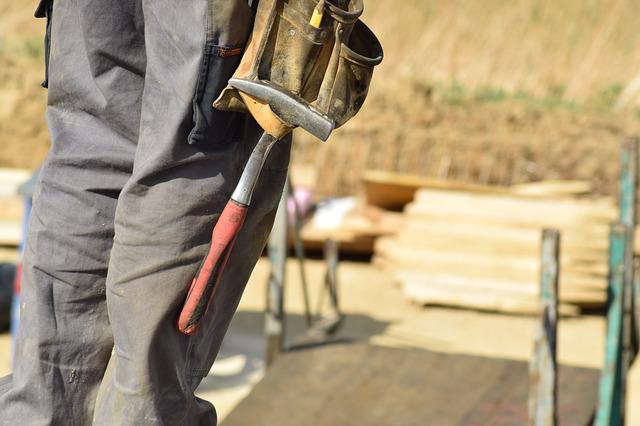
If you find a leak in your ceiling, there are several things to do. To begin with, make a small hole in the ceiling and inspect for broken pipes or seals. If none of these issues are apparent, you might need to repair the roof or gutters. Drywall repair involves removing damaged wall and replacing it with a brand new one. Additionally, check for damaged drywall elsewhere. Once you have found the problem, you should call your insurance provider and request a quote.
Signs
If your ceiling has discoloured or wet patches, it could indicate a ceiling problem. It is possible that water has entered the building from below and traveled a significant distance before it gave any indications. Mold growth is another possibility. These signs can seem subtle but you should investigate them as soon and as possible. Below are some signs of ceiling leaks. Follow these steps to identify them.
Sagging Ceilings - You may have a ceiling leak if you notice stains on your walls, around windows, and in corners. This can indicate an ongoing water leak, which needs to be addressed as soon as possible. The stain could spread, causing damage to the home's structure. You can also look for signs of hidden water damage, such as mold or moss on external walls. These signs can indicate a potential leak from the roof, which could cause other problems like damp inside the house.

The causes
It is possible that water is coming from your ceiling constantly or intermittently. To stop water from leaking into your pipes, close the valve if you are unable to locate the leak. You can temporarily fix the problem while you wait for a plumber. When you suspect that the water coming from your ceiling is due to a leak, you should make sure to dry the area thoroughly before attempting to fix the issue.
The damage from your roof will show up on your ceiling as a wet brown spot or footprint. If you do not immediately address this problem, you could end up with a collapsed ceiling, which may cause further damage to your property. If you don't find the leak quickly, there are other causes that can cause your ceiling to leak. Below are the most common causes.
Repairs
If you recognize the signs of water damage, it is easy to identify and fix ceiling leaks. You may need to have your ceiling repaired immediately if there are water spots. Water stains can be easily detected by a plumber. Water damage on the ceiling can occur from two different sources, a leaking pipe or a roof above the ceiling. If you notice rust-colored stains on the ceiling or watermarks on the ceiling, then it is likely that a leak is causing the damage.
For proper repair and diagnosis of the problem, it is essential to find the source of any leak. Large liquid leakages can leave behind water which cannot be fully wiped out. This water could cause uneven drying which can lead to more problems. Using rags to wipe away the water from the ceiling will make the task easier. Furthermore, the dripping of water will allow you to pinpoint the exact spot. Then, you can try to fix the leak with a professional.

Coverage for insurance
If you discover a leaky ceiling after a major hurricane, there are steps you should take to obtain coverage. First, identify the source of your problem. Next, you must identify the source of the problem and make any necessary repairs. You should keep all receipts. The claims adjuster might need to meet you, so make sure to be prepared to talk about your case. Luckily, Nationwide offers an online quote tool, so it's easy to get an estimate.
While your home insurance policy may cover sudden water damage, it won't cover gradual damage caused by a toddler. If the leak was caused faulty appliances, your insurance company may not cover the repair cost. A leaking ceiling due to an appliance such as a washer or refrigerator will not be covered by your insurance company. In order to prevent water damage, your insurer will want to know that the roof is regularly maintained.
FAQ
Why should I hire a handyman instead of doing it myself?
It's a great way to save time and money by hiring a handyman. You don't have to hire someone else and it saves you the time and effort of doing the job right the first go. You can also hire a handyman who has the right equipment and supplies to do the job right.
Can a handyman put in new fixtures or appliances for me?
A handyman can certainly help you out with these types of projects. Make sure you know exactly what appliance or fixture you need to be installed beforehand.
Which is more difficult: being a contractor or a handyman.
A handyman does not require as much resources as contracting. You only need to have your tools. However, you must be able to manage your own workload and schedule, while contractors typically rely on subcontractors to do most of the work.
Statistics
- Another estimate was that the market in the United States was $126 billion and was increasing by about 4% annually. (en.wikipedia.org)
- A franchise was approximately $110,000 with a franchise fee of $14,900, according to a spokesperson for a national handyman franchise. (en.wikipedia.org)
- Mila keeps a commission of 20% for each completed service performed by Friends and charges various service fees regarding work done by Pros. (appjobs.com)
- With a strong housing market, the handyman and general maintenance worker industry are expected to grow by nearly 10% in the next decade. (housecallpro.com)
- More than 20% of homes in America have outdoor living spaces, including decks and patios. (mrhandyman.com)
External Links
How To
How to Replacing a Broken Tile
Step 1 – Remove the tiles.
Removing the tiles from your flooring is a good idea. If you intend to use them, you will want to keep them intact. You can note the parts that are missing or damaged so that you can find replacements.
Step 2 - Select New Tiles
Look at these different options for replacing tiles.
-
You should find a similar tile to the one that you've just taken out.
-
Use the measurements you took when removing the tile to find a matching piece. This will allow you to quickly find the right size, without having to measure again.
-
Look for various colors, patterns, textures, sizes, shapes, etc.
-
Consider what grout you'd like to use (if any). Some prefer a solid color, while others like mixing it up.
-
Choose a tile that resists moisture.
-
The final thing to consider is the location of the tile. It will save you time and money if you make sure there's enough space for the proper installation.
-
Once you've found the tile that suits your needs, you can place your order online.
Step 3 Install the new tiles.
You can install new tiles in the same way you did before. Be careful to align them properly so they fit together perfectly.
Step 4 – Clean up
Be sure to sweep up all debris from the floor before applying the final protective layer.
This will prevent dust and dirt from building up between the tiles.
Step 5 - Sand Down the Floor
After cleaning, sand the floors to remove any particles.
Step 6 – Finish Off
After the floor has been smoothed, you can apply protective coatings to the tiles. Because wet paint can cause damage to the tiles' surfaces, it is important that you wait.
To protect your floors from stains, you can use "damp-and dry" products.
It will not address all problems that may arise once your tiles have been installed. If you have children, an anti-slip coating may be a good idea.
Remember to let the protective sealer remain on for several additional weeks before you move into your home.